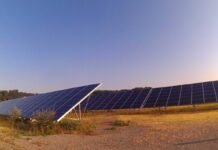Botswana and Nigeria have sealed a memorandum of understanding (MoU) to establish a large-scale data centre campus. The move aims to strengthen their positions in Africa’s fast-growing digital infrastructure sector.
The MoU was sealed between Netherlands-based energy developer AAAS Energy with U.S. data centre operator ChillMine. The new data centre development will integrate renewable energy into their power supply. The facility will be designed to support artificial intelligence (AI) workloads, global hyperscalers, and other energy-intensive computing operations.
READ: AFREC to host first African Energy Efficiency Conference in Addis Ababa
Energy stability
The planned campus will be developed within an Energy Hub and Industrial Park near Palapye, strategically located between Francistown and the capital Gaborone. It will be powered in part by a 250 MW solar PV project with an accompanying 100 MW / 400 MWh battery storage system currently under development. Additional energy stability is expected to come from natural gas projects being advanced by third parties in Botswana.
Maarten Mennes, Managing Director of AAAS Energy, said the combination of solar, battery storage, and natural gas “creates a unique value proposition for global technology companies seeking to expand into Africa.” ChillMine, which specialises in high-density computing infrastructure, will manage the design and operations of the campus.
Meanwhile, in Nigeria, Nugi Group, a domestic software development company, has unveiled plans to construct a Tier IV data centre in Calabar, Cross River State. The project aims to decentralise Nigeria’s digital investments, which are often concentrated in Lagos and Abuja, and position the state as a hub for data-driven economic growth.
Ugi Augustine, President and Solutions Architect of Nugi Group, noted that Cross River offers cost advantages and abundant natural resources to support the venture. The facility will be powered by a hybrid mix of renewable and conventional energy sources.
The site’s proximity to a waterfall enables hydropower generation, while a solar grid with long-term storage capacity is planned alongside natural gas-to-electricity conversion for reliable backup supply. Both initiatives reflect a broader continental trend toward sustainable, large-scale digital infrastructure designed to meet surging demand from cloud providers, AI operators, and enterprises.





